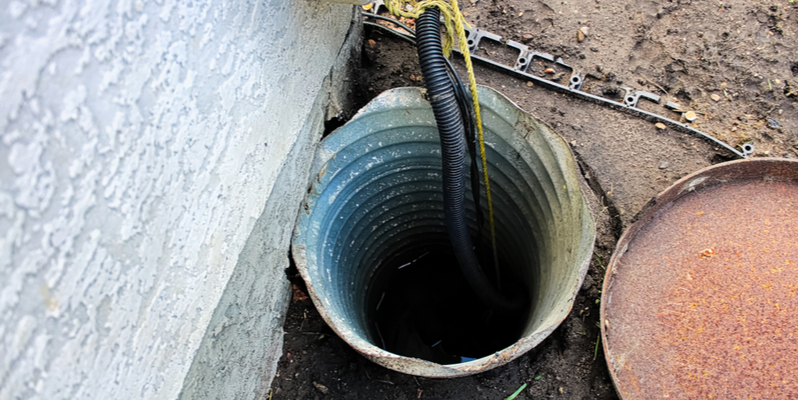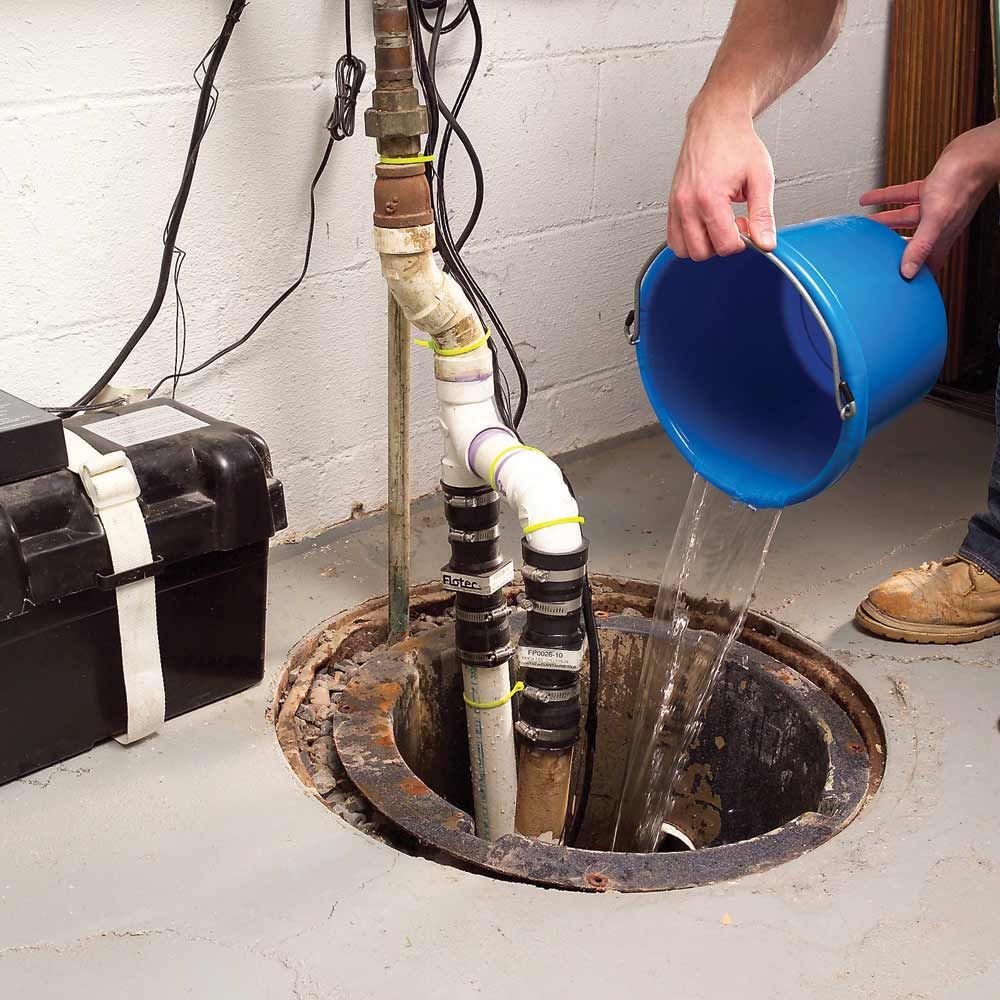Quick Methods to Maintain a Sump Pump
Quick Methods to Maintain a Sump Pump
Blog Article
Have you been interested in facts and techniques about How To Effectively Clean A Sump Pump?

Sump pumps are important components in many homes, specifically in locations susceptible to flooding or extreme wetness. They help stop water damage by efficiently eliminating excess water from cellars or crawl spaces. However, like any other appliance, sump pumps require regular maintenance to guarantee they function properly when required one of the most. Cleansing your sump pump is an essential part of its upkeep, and recognizing how to do it properly can save you from costly repair work and prospective disasters.
Intro
Preserving a clean sump pump is important for its appropriate performance and longevity. Disregarding this vital task can lead to obstructions, malfunctions, and ultimately, water damage to your building. For that reason, discovering exactly how to clean up a sump pump is critical for home owners that count on these devices to maintain their basements dry and safeguarded.
Comprehending the Sump Pump
Prior to diving into the cleansing procedure, it's essential to have a fundamental understanding of exactly how a sump pump functions. Usually installed in a pit or basin listed below the basement floor, a sump pump contains a number of key components, including a pump, a float button, and a discharge pipe. When water accumulates in the pit, the float switch turns on the pump, which after that pumps the water out through the discharge pipeline, far from the structure's structure.
Signs of a Dirty Sump Pump
Recognizing when your sump pump requires cleaning is vital for stopping possible breakdowns. Some typical indications that suggest an unclean sump pump consist of odd sounds throughout operation, lowered water flow, and noticeable particles in the pit. If you notice any of these signs, it's necessary to clean your sump pump immediately to prevent any more problems.
Getting ready for Cleaning
Prior to you begin cleaning your sump pump, it's necessary to take some safety and security preventative measures. Begin by shutting down the power to the pump to stay clear of any type of electric accidents. Additionally, wear appropriate protective gear, such as gloves and goggles, to secure yourself from dust, debris, and prospective pathogens.
Detailed Guide to Cleaning Up a Sump Pump
Shutting down the Power
Begin by disconnecting the power supply to the sump pump to stop any kind of mishaps while cleaning.
Removing Debris and Dirt
Make use of a pail or an inside story to remove any kind of noticeable debris, dirt, or sediment from the sump pit. Dispose of the particles appropriately to avoid it from obstructing the pump or the discharge pipe.
Cleaning the Pump and Drift Switch Over
Once the pit is free from particles, thoroughly eliminate the pump from the pit. Inspect the pump and the float switch for any type of signs of damage or wear. Make use of a soft brush or fabric to clean the surface areas and eliminate any kind of gathered grime.
Purging the System
After cleansing the pump and float button, flush the sump pit with tidy water to eliminate any kind of staying dust or debris. This will help make sure that the pump runs smoothly and efficiently.
Checking for Correct Performance
Before reinstalling the pump, carry out a fast test to guarantee that the float button turns on the pump properly. Pour some water into the sump pit and observe the pump's operation. If everything is functioning correctly, you can rebuild the pump and reconnect the power supply.
Maintenance Tips to Keep Your Sump Pump Clean
In addition to periodic cleaning, there are several maintenance suggestions you can comply with to keep your sump pump in optimum problem:
Conclusion
Cleaning your sump pump is a critical facet of its upkeep and ensures that it runs effectively when you require it the most. By following the actions laid out in this overview and incorporating regular upkeep right into your regimen, you can prolong the lifespan of your sump pump and protect your home from water damages.
6 STEPS ON HOW TO CLEAN A SUMP PUMP PROPERLY
UNDERSTANDING SUMP PUMPS
Your sump pump plays a crucial role in protecting your home by managing and removing excess water. It primarily functions as a “shield”, guarding your basement against the damaging effects of water accumulation. The pump is housed in a sump pit in the lowest part of your basement, and its job is to pump out any water that collects there.
During heavy rainfalls or when snow melts rapidly, water can infiltrate your basement, posing potential risks like flooding, structural damage, and harmful mold growth. Here, the sump pump springs into action, pumping out the intruding water and directing it away from your home.
SAFETY FIRST
Before cleaning, remember to prioritize safety. Disconnect the sump pump from the power source to prevent any accidental electric shocks. Also, wear sturdy gloves to protect your hands from any sharp or dirty components within the pump.
REMOVE THE SUMP PUMP
After ensuring your safety, the next step is to remove the sump pump from its pit. Doing this might require careful maneuvering as you don’t want to damage any pump components. Once removed, clean the sump pit to remove any accumulated debris or sludge.
INSPECT THE PUMP
Inspect the pump for any visible signs of wear or damage. Check the power cord, float switch, and impeller housing. If any components look worn out or damaged, consider replacing them to ensure optimal performance.
CLEAN THE PUMP
Thoroughly clean the pump with warm, soapy water. Make sure to rid it of any dirt, gravel, or other debris that might impede its performance. You can use a toothbrush to clean the small, hard-to-reach parts of the pump.
REINSTALL THE SUMP PUMP
Reinstall the pump into the sump pit Make sure it’s positioned correctly to remove the water effectively Once it’s back in place, reconnect it to the power source TEST THE PUMP
Finally, pour some water into the pit to ensure the pump works correctly. It should start automatically and begin pumping out the water; if it doesn’t, check the power source and the positioning of the pump.
Remember, while cleaning your sump pump is an essential part of home maintenance, hiring a professional plumber for a thorough inspection and cleaning at least once a year is also important. This will ensure that your pump is in optimal condition, ready to protect your home from potential water damage.
BEST PRACTICES FOR CLEANING SUMP PUMP DISCHARGE PIPES
Regular Inspection: Regularly inspect your discharge pipes, especially during heavy rainfall or snowmelt periods. Look for any signs of blockage or damage. Early detection of problems can prevent serious issues down the line. Periodic Cleaning: Over time, sediment and debris can accumulate in the discharge pipes, impeding the flow of water. Regular cleaning helps keep the pipes clear and functioning efficiently. You can use a high-pressure water jet to effectively clean the pipes. Insulation During Winter: In colder climates, discharge pipes can freeze, blocking the outflow of water. Protect your discharge pipes from freezing temperatures by insulating them with foam pipe insulation. This will ensure the sump pump can continue to discharge water even in freezing conditions. Proper Positioning: The discharge pipe should be positioned to direct water away from your home’s foundation. Improper positioning can lead to water seeping back into the basement. Ensure the pipe is long enough and angled correctly. Installation of a Check Valve: A check valve prevents water from flowing back into your sump pit after the pump has pushed it out. Installing a check valve helps maintain the efficiency of your sump pump and reduces the risk of flooding. Minimize Pipe Turns: Every curve or turn in the discharge pipe can decrease the efficiency of water flow. By minimizing turns and bends in your discharge pipe, you can increase the efficiency of your sump pump. https://www.fullspeedplumbing.com/how-to-clean-a-sump-pump-properly9999/

As an enthusiastic person who reads on Cleaning & Maintenance Tips for Your Home's Sump Pump, I thought sharing that editorial was beneficial. Sharing is caring. You never know, you will be helping someone out. We take joy in your readership.
Quote Report this page